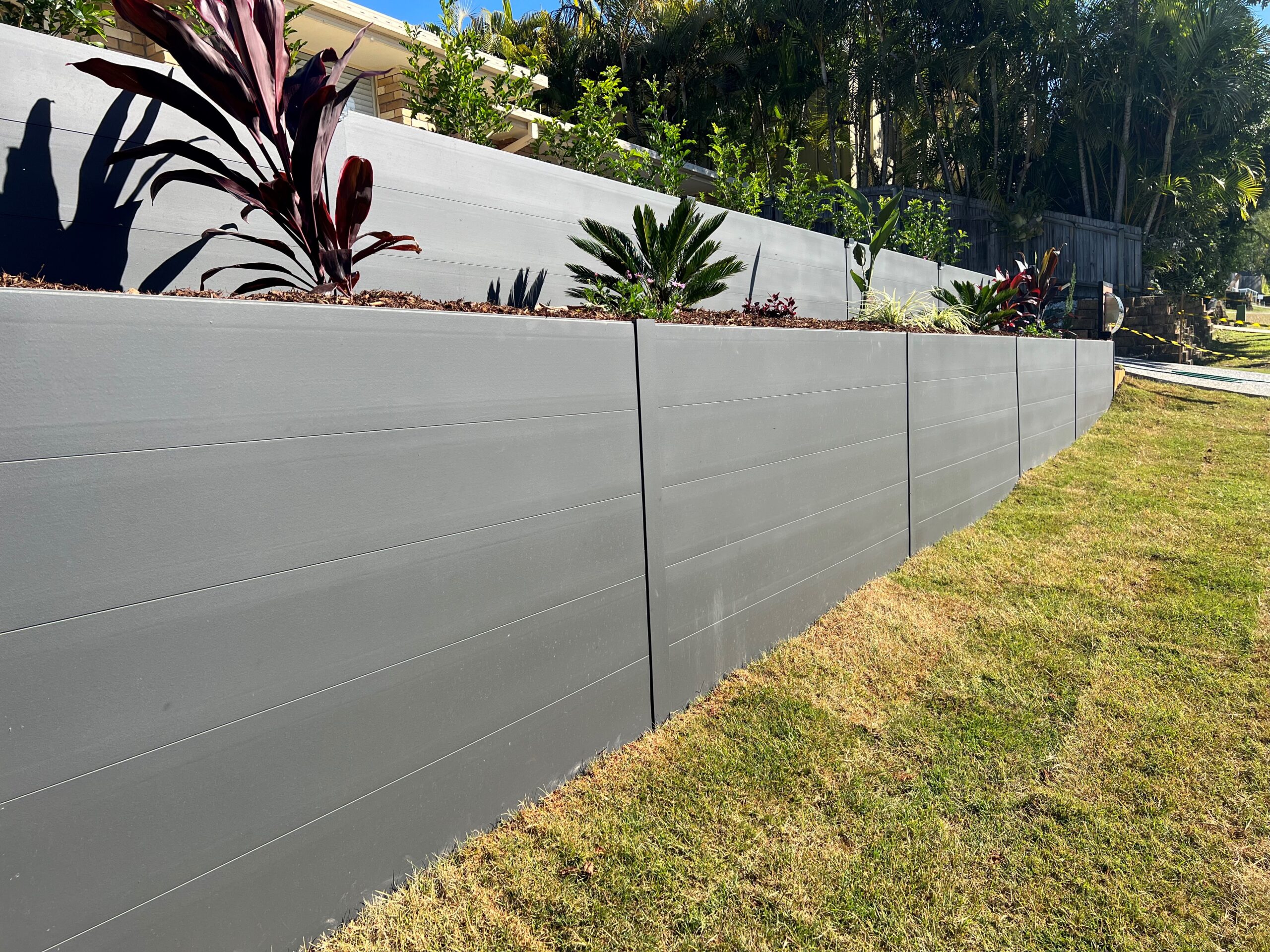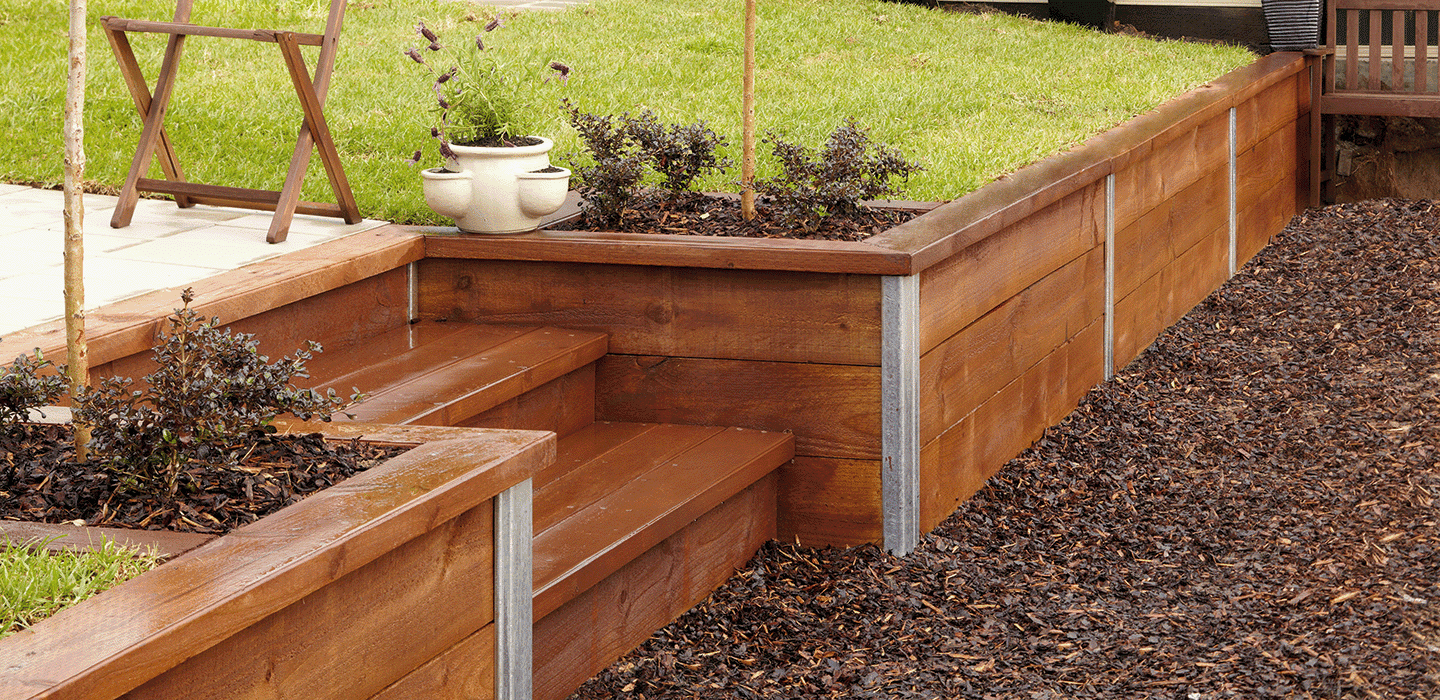Top Benefits of Expert Retaining Walls Sunshine Coast for Your Building
Top Benefits of Expert Retaining Walls Sunshine Coast for Your Building
Blog Article
Enhancing Residential Property Security: The Duty of Retaining Walls in Soil Retention and Erosion Control
Retaining walls stand as silent guardians, playing an essential function in soil retention and disintegration control. By discovering the subtleties of different types, style factors to consider, building and construction techniques, and maintenance pointers connected with retaining walls, a much deeper understanding of their essential role in improving home security arises.
Relevance of Retaining Walls in Stability
Keeping walls play an essential duty in holding back soil, avoiding disintegration, and creating level surfaces in sloped areas. By offering architectural support, keeping walls aid to redistribute lateral pressure created by dirt, avoiding landslides and slippage.
Preserving walls are especially necessary in hilly or irregular surfaces where dirt erosion is a typical occurrence. Without ample assistance, soil disintegration can lead to the degradation of landscapes, compromising the integrity of structures and posturing threats to inhabitants. Retaining wall surfaces work as obstacles, maintaining the dirt and avoiding it from moving downhill during heavy rains or various other environmental stressors.
Additionally, retaining wall surfaces supply lasting benefits by decreasing maintenance prices linked with dirt disintegration and land instability. By spending in well-designed retaining wall surfaces, homeowner can ensure the long life and sustainability of their landscapes while advertising a aesthetically attractive and safe setting.

Kinds Of Retaining Walls for Erosion Control
Gravity maintaining walls are durable structures that depend on their weight to stand up to the pressure of the dirt behind them. Cantilever retaining walls, on the various other hand, are developed with a thicker base and make use of a lever arm to stand up to the dirt pressure.
For taller wall surfaces or where room is a restraint, secured retaining walls are commonly used. When picking the proper kind of maintaining wall surface for disintegration control, aspects such as soil composition, wall height, and site problems need to be very carefully thought about to make sure lasting stability and effectiveness.
Design Factors To Consider for Dirt Retention
The height and area of the preserving wall surface are crucial aspects that influence the total design. Engineers have to likewise take into consideration the pressure applied by the retained dirt and possible lateral tons to make certain the structure's security over time.
Furthermore, the material option for the retaining wall is critical in enhancing durability and capability. Concrete, wood, gabion baskets, and natural rock prevail materials made use of in maintaining wall surface construction, each with its special advantages and considerations. Appropriate water drainage mechanisms, such as weep holes and French drains pipes, need to be integrated into the style to avoid water accumulation behind the wall surface, which can bring about architectural failing and erosion.
Building And Construction Techniques for Keeping Walls
When carrying out style considerations for effective dirt retention, the building and construction strategies for maintaining walls play an essential duty in making sure structural integrity and long-term security. One usual method is the gravity wall, which counts on the weight and mass of the wall surface itself to withstand the pressure of the preserved soil.
One more widely made use of building technique is the cantilevered wall surface, which uses a concrete more info here piece structure that extends in reverse into the retained dirt. This style provides additional security and is appropriate for medium to high preserving wall surfaces. For taller frameworks, enhanced soil strategies such as the use of geogrids or soil nails can be utilized to enhance the wall's stamina and stability.

Maintenance Tips for Residential Or Commercial Property Security
To guarantee lasting residential property security, routine maintenance practices are essential for preserving the honesty of preserving wall surfaces and protecting against disintegration problems. Cleaning up the surface of the preserving wall surfaces can likewise help keep their architectural stability by removing dust, debris, and greenery that could damage the wall over time.
Along with visual inspections and cleansing, it is necessary to examine the drainage systems related to the preserving walls. Ensuring that drains pipes are clear of blockages and working properly can protect against water accumulation behind the wall surfaces, which can cause pressure and possible failure. Effectively working drainage systems are crucial for managing water circulation and reducing the danger of erosion.
Consistently keeping and keeping track of preserving walls according to these pointers can extend their life expectancy and add to the general stability of the residential or commercial property.
Conclusion
In conclusion, preserving walls play a critical role in improving property stability by stopping dirt erosion and keeping soil in place. By making use of various sorts of retaining wall surfaces and considering layout and construction techniques, homeowner can effectively manage erosion and preserve the honesty of their land. Normal upkeep of keeping wall surfaces is vital to guarantee long-lasting stability and defense versus disintegration. Effectively created and maintained retaining walls are essential aspects in protecting residential property security.
For taller wall surfaces or where room is a restraint, anchored keeping walls are often employed. These wall surfaces use wires or strips that are secured into the dirt or rock behind the wall surface to supply additional assistance. When picking the ideal kind of maintaining wall for disintegration control, variables such as soil composition, wall surface read review elevation, and site problems have to be very carefully thought about to ensure durable security and performance.
One typical technique is the gravity wall surface, which depends on the weight and mass of the wall itself to stand up to the stress of the kept soil. Cleansing the surface area of the retaining walls can also aid preserve their architectural stability by removing dust, debris, and plant life that his response might weaken the wall over time.
Report this page